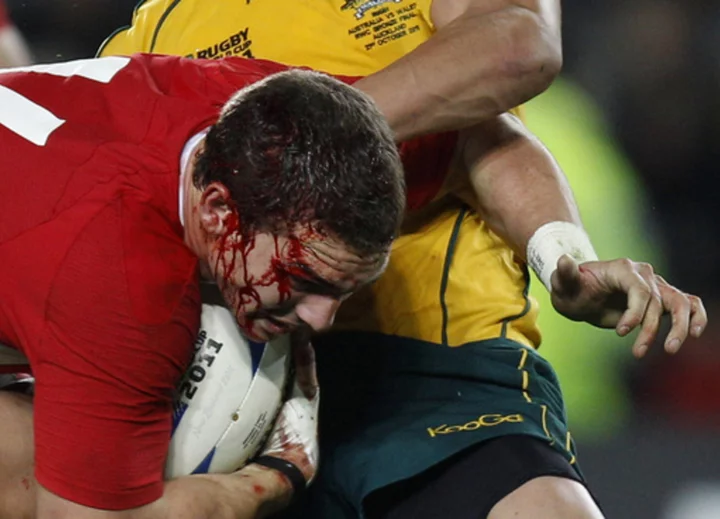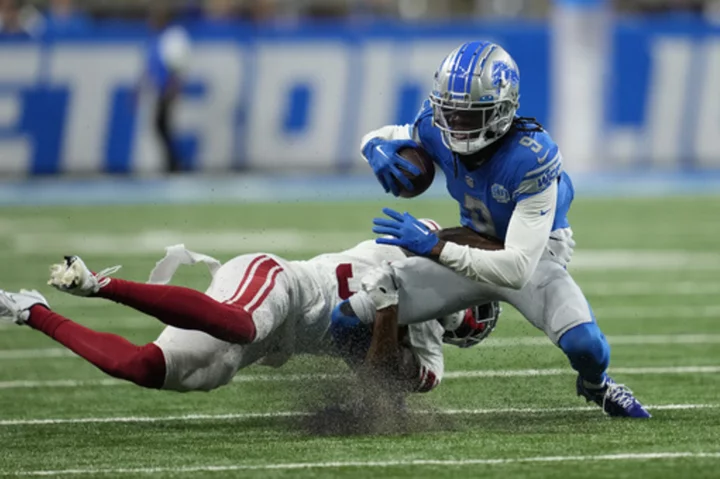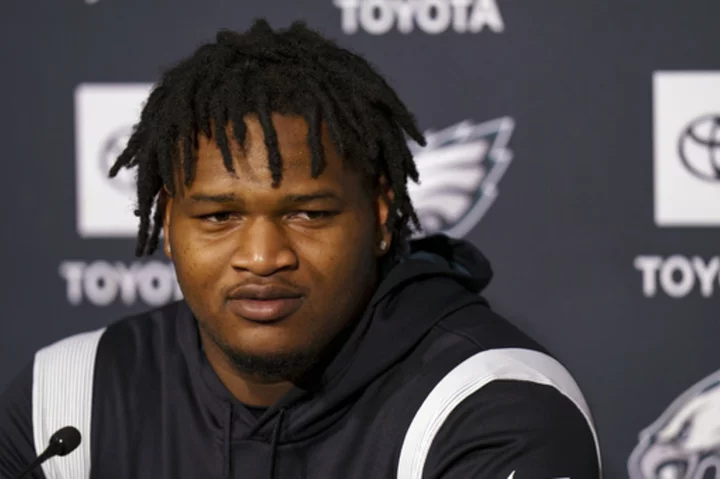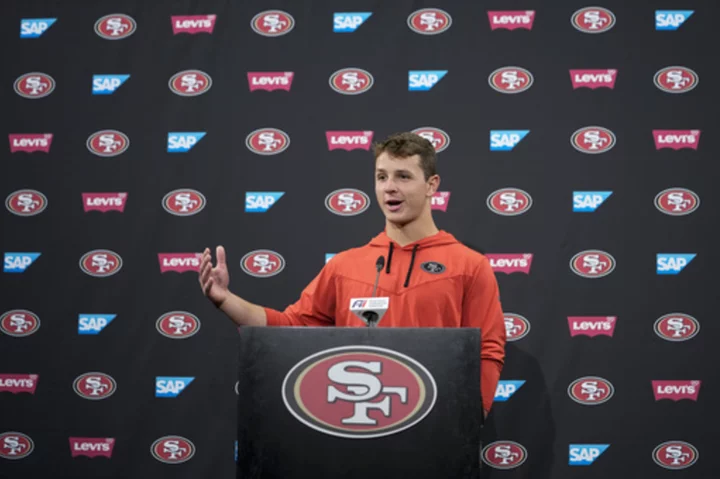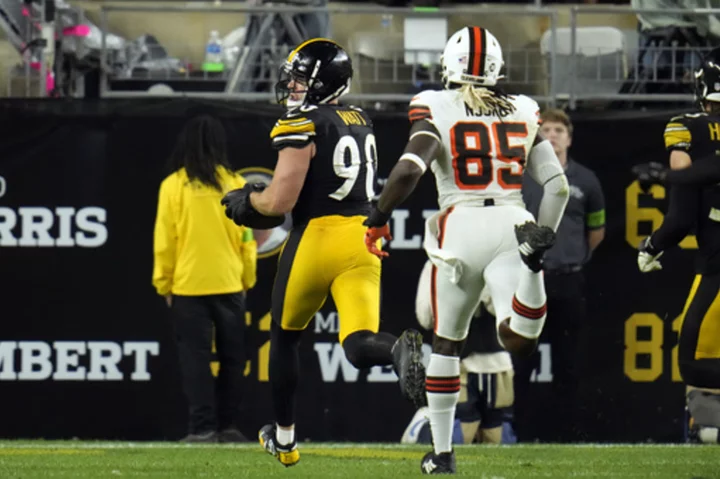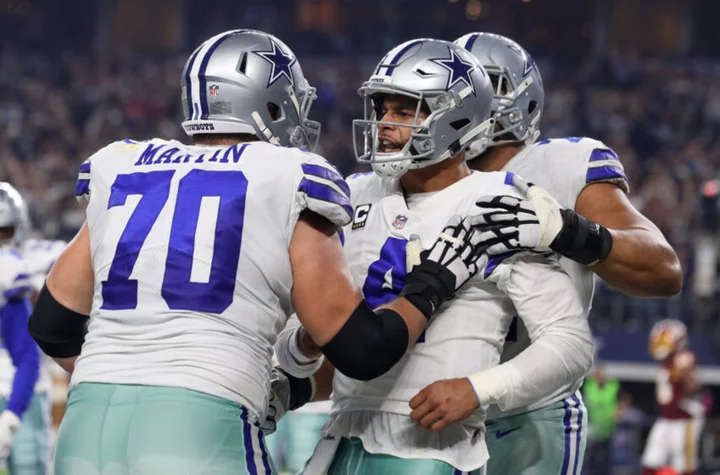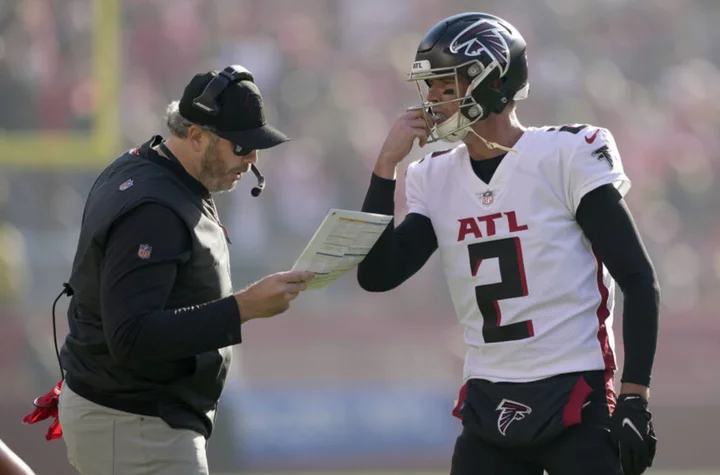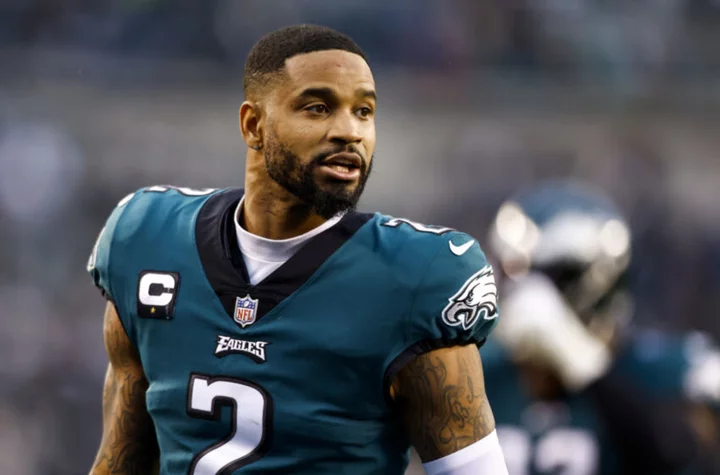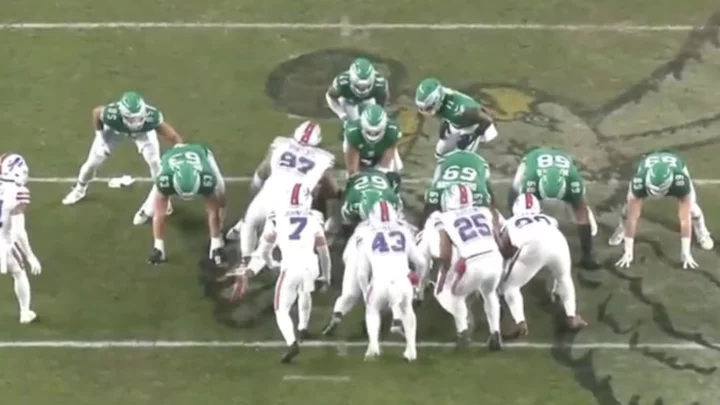Alix Popham traveled the world as a rugby player. He played 33 times for Wales and competed at two Rugby World Cups, and even got to meet Nelson Mandela before a match in South Africa.
Or so he’s told.
He can’t actually remember.
Popham is 43 and his rugby career is, in his words, “all a blur.”
“My neuropsychologist described it,” he said, “as when I was playing in those games and in that part of my life, my brain was so inflamed through the contact I was doing continuously over a 10/11-month season, it’s like I was taking photos but with no camera.”
Popham has been diagnosed with early onset dementia and is one of a growing number of rugby players in their 30s and 40s — all of whom have brain disorders such as motor neuron disease and epilepsy — to have launched a lawsuit against governing bodies of the sport he still loves. They contend the rugby authorities failed to take reasonable action to protect the players from repeated blows to the head during their careers.
The case has similarities with a lawsuit settled by the NFL in 2013, at a likely cost of more than $1 billion, after thousands of former American football players who developed dementia or other concussion-related health problems claimed they were caused by the very on-field violence that fueled the game’s rise to popularity and profit.
It’s against this backdrop that the Rugby World Cup is taking place in France from Sept. 8.
END OF AN ERA?
“I think this World Cup is the end of rugby as we know it,” Prof. Willie Stewart, a neuropathologist and former adviser to governing body World Rugby, told The Associated Press. “I think the current form of rugby union as it is played will change straight after the World Cup.”
Rugby is nearly three decades into the professional era, which has brought about huge changes to the game.
Big business; bigger and bigger players; monstrous collisions at a volume far higher than the NFL. The sight of a big, heavy forward powering into prone, defenseless players at a breakdown can make viewers shudder.
Hence the increasing concerns about the health of players, from the elite level to the grassroots, and especially the effect repeated knocks to the head can have on the brain.
Concussions — or, in other words, brain injuries — are commonplace, roughly one per game according to annual injury audits commissioned in English rugby.
“Rugby’s awareness, even if they won’t say it publicly, is that there's a significant problem with brain health in former players,” said Stewart, an honorary professor at the University of Glasgow.
"Looking at it back in the ’70s and ‘80s, training a couple of evenings a week … if we’re seeing a problem from then, rugby must — secretly or even publicly — be really worried about 1995 (professional era) onwards when suddenly players were being exposed to contacts all week and having a form of rugby based on collision rather than avoidance. That’s going to be stocking up a whole world of problems which are just beginning to emerge.”
NFL EXPERIENCE
The NFL has learned lessons from the costly 2013 lawsuit that sparked so much introspection, and continues to take more steps to ensure the health and safety of players.
The league has tried to eliminate hits to the head by implementing penalties, fines and suspensions. This year, the NFL drastically changed the kickoff rule to reduce returns because the play led to 19 concussions in 2022. In April, the first quarterback-specific helmet designed to help reduce concussions was approved for use by the NFL and NFL Players' Association, while a position-specific helmet already has been used by offensive and defensive linemen.
“Any time we can change the protocols to make it safer for our players, we’re going to do that,” NFL Commissioner Roger Goodell said at the Super Bowl.
Rugby, which doesn't use hard helmets or thick pads, has made many changes, too. The recommended tackle height has been lowered in community rugby to below the base of the sternum in an effort to eliminate head hits, and World Rugby is not ruling out experimenting with it in the elite game. The governing body has issued guidance on weekly practice loads such as a maximum of 15 minutes of full-contact training, though it's up to teams to enforce it — and isn’t as strict as in the NFL where it’s overseen by an independent players’ union.
In theory, there are stricter punishments for high tackles and breakdown cleanouts targeting the head. And rugby is taking its in-game and return-to-play concussion protocols seriously, claiming the sport is world-leading and adopts an evidence-based approach. One recent innovation to detect concussions is the use of a special mouth guard that measures biomarkers in saliva.
“Player welfare is World Rugby’s No. 1 priority and it should be the No. 1 priority of every rugby organization,” World Rugby says. “Everyone involved in the organization has a duty of care in relation to the players and every step should be taken to mitigate against potential risk.”
COMPETING INTERESTS
Critics are skeptical, however, about the sport’s safety crusade, arguing the authorities are conflicted by the advent of professionalism and pointing to flaws in their protocols and regulations.
“Former professionals are paying a heavy price for rugby's abject failure to rigorously investigate concussion's long-term risks,” said author and campaigning journalist Sam Peters, whose soon-to-be-published book — “Concussed” — examines rugby's relationship between business and player welfare.
How, critics say, can Wales prop Tomas Francis, after clashing heads with his own teammate in a match last year, pass a head injury assessment despite appearing unsteady on his feet and leaning on a post for support — signs that should have led to his immediate removal? Just this month, a judicial panel overturned a red card for England captain Owen Farrell for a high, no-arms tackle to a Wales player’s head in a World Cup warmup. Farrell was later handed a ban following an appeal by World Rugby but the whole affair did little to inspire confidence in the disciplinary process around head injuries.
“There’s always competing interests when it comes to sports and professional associations,” said Chris Nowinski, a co-founder of the Concussion Legacy Foundation, a Boston-based not-for-profit organization that supports athletes and others affected by brain injuries. “What’s best for business is the guys playing (hundreds of) days a year and never taking a day off for brain injuries, but that’s not fair to the athletes.
“They're going to have to make some sort of sacrifices if they want rugby to succeed long term.”
Nowinski was a former American football player and WWE wrestler who now, with a Ph.D. in behavioral neuroscience, is a co-author of brain research projects and has helped doctors at Boston University acquire the brains of former NFL players. So far, 345 of the 376 brains of NFL players studied at the university's brain bank have been diagnosed with chronic traumatic encephalopathy (CTE), the neurodegenerative disease linked to repeated head trauma, according to the latest figures released in February.
Stewart’s research team conducted a study of 412 former Scotland rugby players and more than 1,200 individuals from the general population. It showed the chances of the former rugby players being diagnosed with a neurodegenerative disease were 2.67 times higher.
In 2021, a study funded by the nonprofit Drake Foundation looked at biomarkers in 44 current elite players from 2017-19. Results showed 23% of them had abnormalities in their brain structure.
For Nowinski, the evidence is mounting and the clock is ticking for rugby authorities to acknowledge the link between repeated head impacts and CTE, and to make more changes so the sport is safer.
He'd like to see fewer or even no hits in practice, for head hits to be more aggressively penalized, and for children to not be exposed to sports where they could get CTE — including rugby — before at least the age of 14.
“We could be as close as five years away from diagnosing CTE in living people,” Nowinski said in a video call. “If we throw a bunch of 18-year-olds through a scanner and find out 30% of them already have CTE, would you sign up your son or daughter for that game? The answer is probably not.”
HEAD FOR CHANGE
Popham has three daughters and won’t be pushing them to play rugby, given what he has learned. Away from the lawsuit that has reached its first preliminary hearing in the courts, he is making it his mission — as a co-founder of the Head For Change charity and through his lobby group, Progressive Rugby — to raise awareness about the impact of head trauma in sports and to demand better protection for players.
That means, in Popham’s view, reducing the number of games per season, keeping players out for 28 days after a head injury and for players to have a brain scan every season to assess their brain health. He wants a concussion to be called what it is — a traumatic brain injury.
“The conversation we’re having in rugby was happening in boxing 100 years ago,” he said. “The knowledge has been there, it just didn’t get passed down the food chain. And it’s shocking really.
“That’s my mission, educating people on this so the game does survive. But unfortunately, the powers-that-be have their heads in the sand.”
___
Steve Douglas is at https://twitter.com/sdouglas80
___
AP rugby: https://apnews.com/hub/rugby

